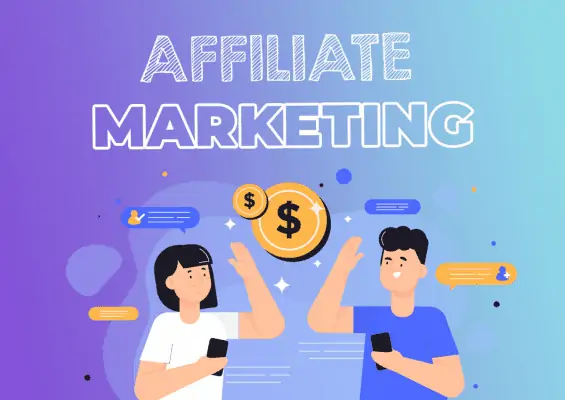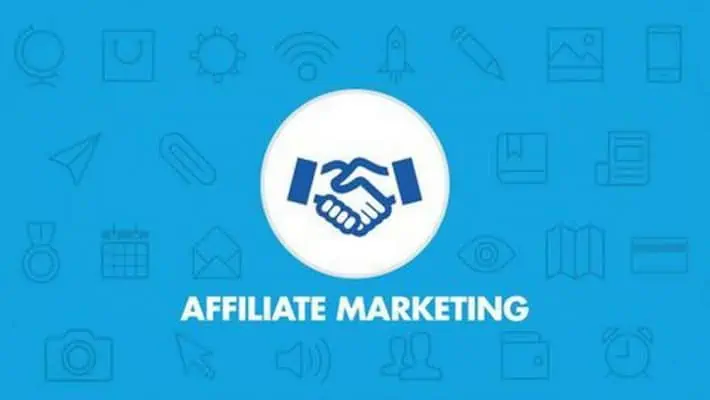
Affiliate marketing is an advertising model where publishers earn a commission by promoting a product or service made by another retailer or advertiser. The affiliate partner has rewarded a payout for providing a specific result to the retailer or advertiser.
What is affiliate marketing?
In simple terms, affiliate marketing is an ecommerce business model built on revenue sharing. It is selling something on behalf of someone else and earning a commission. I can start my affiliate marketing program if I have a product that I want to sell more of.
By inviting people to become my affiliate partner, they’ll promote my products. Whenever someone visits their site, clicks on their unique affiliate link, and then buys my product, I’d pay a commission to that affiliate marketer.
An affiliate program is a cost-effective way for small businesses to build a sales team. Since money doesn’t need to pay unless a conversion makes, it doesn’t cost the company as much as hiring a full-time sales team.
How does affiliate marketing work?

Affiliate marketing involves referring to a product or service by sharing it on a blog, social media platform, podcast, or website. The affiliate earns a commission each time someone purchases through the unique link associated with their recommendation.
To review:
You show an ad or a link for Store Z on your website, blog, or social network.
A customer clicks your unique link.
The customer purchases Store Z.
The affiliate network records the transaction.
Store Z confirms the purchase.
You get paid a commission.
Commission rates vary depending on the company and the offer. You’ll earn about 5% of the sale on the low end, but with some arrangements, you can earn as much as 50%, usually when promoting a class or event. There are also affiliate marketing programs that provide a flat rate per sale instead of a percentage.
Types of affiliate marketing
Affiliates always carry a bit of mystery—you never know if the person has ever really used the product or if they are promoting it for the money. Both cases still exist today.
It wasn’t until 2009 that renowned affiliate marketer Pat Flynn broke down the different types of affiliate marketers into three groups.
Unattached
The first type of affiliate marketing is “unattached,” or when you have no authority in the product’s niche you’re advertising. There is no connection between you and the customer. Often you are running pay-per-click advertising campaigns with your affiliate link and hoping people will click it, buy the product, and earn a commission.
Unattached affiliate marketing is attractive because you don’t need to do any legwork. Affiliate marketing businesses rely on reputation and trust with a target audience online. Some don’t have the time or desire to build those relationships, so this type of marketing is their best option.
Related
Related affiliate marketing is where you promote products and services you don’t use but that are related to your niche. Affiliates, in this case, have an audience, whether it’s through blogging, YouTube, TikTok, or another channel. They have influence, making them a trusted source for recommending products, even if they’ve never used them before.
The problem with related affiliate marketing is, do you want to promote something you’ve never tried before? It could be the worst product or service ever, and you wouldn’t even know. It only takes one lousy recommendation to lose the trust of your audience. It’ll be hard to build a sustainable affiliate marketing business if you don’t have confidence and transparency.
Involved
Involved affiliate marketing refers to only recommending products and services you’ve used and honestly believe in. “Involved affiliate marketing is the way forward,” says Elise. “It’s rooted in trust and authenticity, best for your audience and business.”
In this type of marketing, you use your influence to promote products and services that followers may need instead of paying to get clicks on a banner ad. Building this type of credibility with an audience takes more time, but it’s necessary to build a sustainable business.
Elise explains that advertising has also become much more accessible. “You don’t have to hide behind expensive PPC ads and hope for clicks and sales. An organic Instagram Story or blog post about your experience with a product will go a long way.” Elise prefers this method because it’s honest and is “the only genuine way to become a trusted source on any topic.”
Tips for affiliate marketing success

To create a good review, it’s best to get personal. Share your experience in your blog, social media post, Instagram Story, or YouTube video. If you’re writing an individual review, give a candid opinion based on your experience and knowledge of the product. The more open you are, the more authentic you will be. People will be more comfortable following your advice if they can trust you.
Trust is crucial in your affiliate marketing efforts because people need to trust you enough to act on your recommendations. The level of trust you’ll need to make affiliate sales depends on your industry and the products you’re recommending.
Beyond sharing your experiences, you can build trust by limiting the number of affiliates you promote or by only becoming an affiliate for products you use and sticking to your area of expertise.
Talk to a product expert.
Another option is interviewing others who use the product or service or even questioning the person who makes or sells it. This can give your review more depth, creating a narrative for the reader.
Create a product tutorial
While your success with affiliate marketing can depend on the overall size of your following, another way to drive traffic is by providing a tutorial on the offer.
People often perform “how to” Google searches, such as “how to save money for college” or “how to decorate a laundry room.” Offer a tutorial that solves a searcher’s problem and showcases the product’s value. Your referrals will make more sense in context, and you’ll provide the customer with a stronger incentive to purchase the product you’re recommending.
Build an email list
An email list is a list of contacts you’ve gathered who would like to receive information from you. Building a contact list is essential because it’s one of the best ways to connect with people outside social media. When it comes to purchases made due to receiving a marketing message, email has the highest conversion rate (66%) compared to social and other marketing channels.
Gather emails from your content and send a newsletter weekly or biweekly to subscribers. Affiliate marketers can send many different things to subscribers on their list:
Free downloads
Reports
New blog posts
A look inside your life or business
Entertaining stories
Reminders and news
Special deals
Use your email list as an opportunity to show value to subscribers. If they send you an email back, respond. Be consistent with your newsletter cadence and quality. Then, every once in a while, promote an affiliate product or two to subscribers.
There is no hard rule on how many times to send these promotional emails. Please don’t send them every time, or you’ll come off as spammy and untrustworthy. If you’re promoting good products once a month, you’re only providing value to subscribers who need them.
Find relevant search terms.
If you’re promoting an offer through a blog post, research which keywords someone might use in a search engine to find an answer to a related problem. Google Ads Keyword Planner is a good tool that can help. (It’s free to use, but you’ll need to create an account.)
Consider your angle
Depending on your offer, figure out how much energy you should invest in instructional or tutorial content, which is often a natural lead-in to someone trying a product for themselves.
For example, you could record a video of yourself using and getting the most out of a physical product or showing off the benefits of a digital product, like software. Unboxing posts are popular, so if you receive the product in the mail, document your experience opening it up.
Set your distribution strategy
Once you’ve written your promotional content, please share it on your website or social media platforms. You can create an email marketing campaign if you have a subscriber list. And be sure to have an affiliate marketing hub on your website with a resources page where you share a quick list of all of the tools you use and love.
Try offering a bonus.
Sometimes marketers promote their affiliate programs by offering bonuses to anyone who purchases the offer. For example, you could give a free ebook you wrote to any follower who makes a purchase.
Promotions like this encourage customers to buy by sweetening the deal. They’re incredibly persuasive if the bonus you offer is something you usually sell because then shoppers can see its actual dollar value right on your site.
Conclusion
Affiliate marketing is a great way to start making money online without risks. While having the capital to invest in marketing and ads can ultimately help, all it takes is your time. If you invest the time upfront, you can earn a nice income. And as you grow, you can scale your efforts into other niches.
Reinvented no affiliate marketing wheels here. These are the fundamentals, and applying them will get you off the right foot.
Don’t expect life-changing income or the freedom to quit your 9-5 overnight. Affiliate marketing takes time. Focus first on making your first affiliate sale. As your site grows, set new goals, and continue experimenting.
Good luck to you!
Private Agent for Dropshipping Success